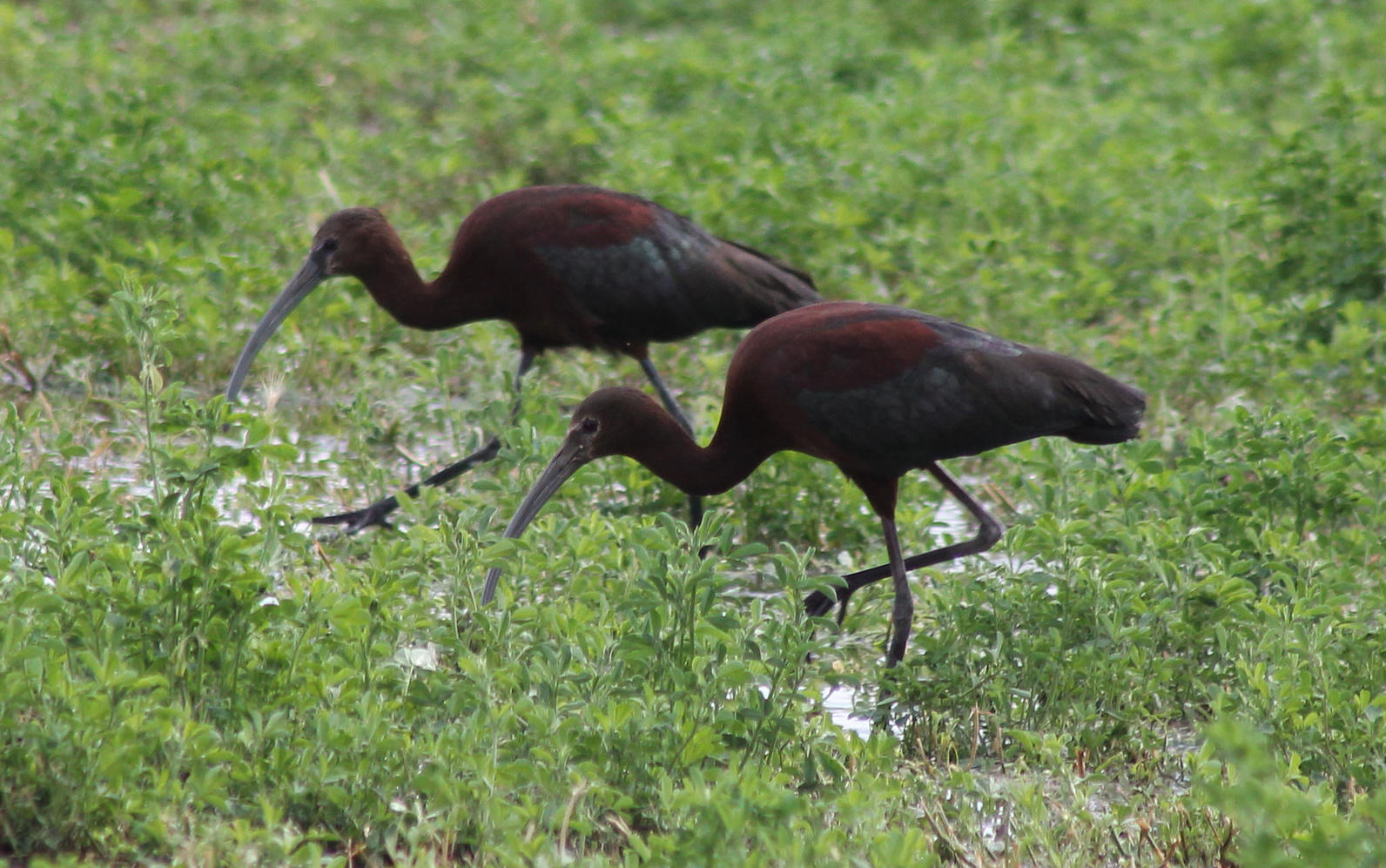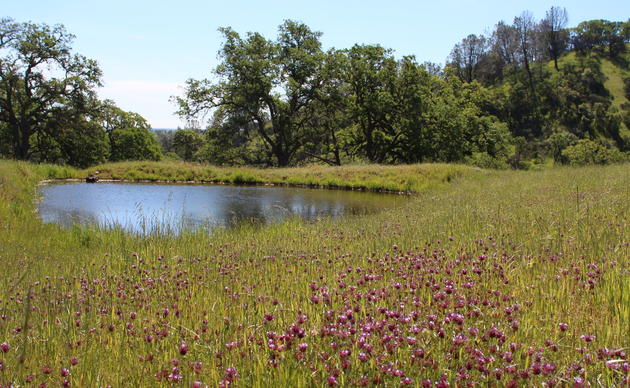
What about alfalfa?
The question popped into Khara Strum’s head as she sat at a 2016 symposium in Reno listening to a UC Davis professor talking about how California could direct winter floodwaters to dormant alfalfa fields to recharge groundwater.
Up to this point, the bulk of Strum’s work as a conservation project manager for Audubon California had been to study ways to improve the habitat value of rice fields and recruit farmers into the federal incentive program to create habitat for birds. But now, sitting at this symposium, she started to wonder about alfalfa, birds, and groundwater – and how perhaps she could pull these three things together in a multi-benefit project.
Rice and alfalfa are very different in the field. Rice is an annual crop, and its panicles turn golden as the season wears on. Alfalfa is a perennial crop, harvested every 30 days, and it growing plants shine emerald. When you walk into a rice field, you sink into the mud as you would in a wetland, where you can easily walk across an alfalfa field most of the time on solid ground.
But one of the things these two crops hold in common is what attracts the birds: lots of water.
It was obvious from the first that exploring alfalfa as bird habitat would be a great project for the Migratory Bird Conservation Partnership, which includes Audubon California, Point Blue Conservation Science, and The Nature Conservancy. With our partners, Strum launched a pilot project to learn more about alfalfa’s value to birds, which included surveys of fields in the Central Valley.
She already knew that alfalfa is second only to rice in the bird diversity supported. According to research by UC Davis, over 132 species of birds use alfalfa in California. Accordingly, surveys turned up a lot of different birds: Long-billed Curlew, Swainson’s Hawk, Lesser Sandhill Crane, White-faced Ibis, Great Egret, Western Kingbird, and American Kestrel, to name just a few.
But Strum and the team want to learn more about how birds were using the fields, in particular how birds responded to the monthly flooding in alfalfa fields between April and October that is part of the production process, and how proximity to nearby wetlands affects behavior.
“We’re still in the discovery phase,” Strum says. “At some point we want to be able to make recommendations about improving habitat in the same way that we do with rice. We are also open to it going a different direction, as long as the outcomes benefit birds.”
In the meantime, Audubon California’s research on alfalfa is taking on critical importance. New sustainable groundwater policies in the state have the potential to change the face of the farming landscape in the Central Valley, and one such change could be a decline in alfalfa farming in favor of less water-intensive and more economically lucrative crops.
“Our study will tell us the most important places to keep alfalfa on the landscape for birds,” Strum says. “By identifying opportunities for multiple benefits, we can ensure that birds will continue to use alfalfa in the Central Valley long into the future.”
Strum’s work with alfalfa perfectly embodies the philosophy of Audubon California’s Working Lands Program that by working cooperatively with farmers and ranchers we can create and protect invaluable habitat opportunities for birds.
By Garrison Frost
Support Bobcat Ranch
Your gift supports our work to develop & promote bird-friendly cattle ranching practices in CA and to protect and restore native grassland habitat for birds.




